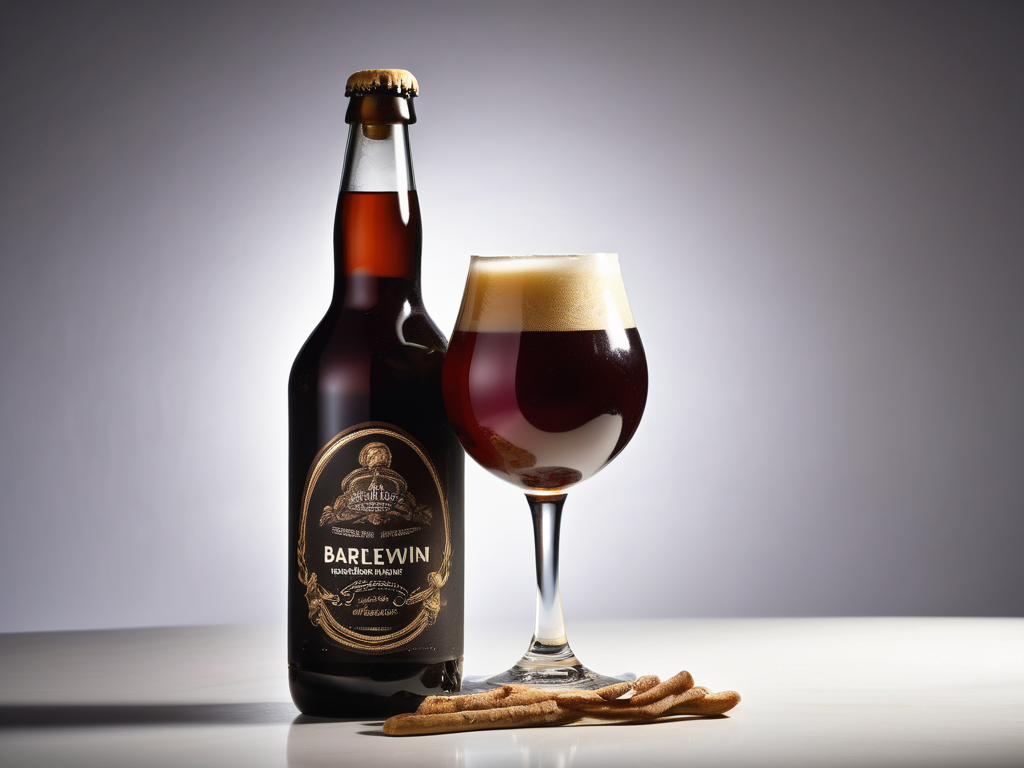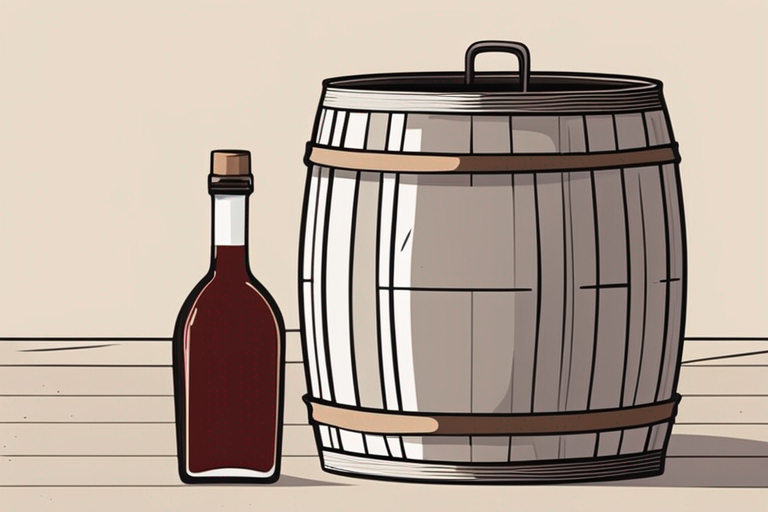
Repurposing Expired Barrel-Aged Barleywine in Cooking
Get Your Free Food Safety Cheat Sheet
30 most common foods with instant answers. Print it and stick it on your fridge—completely free!
Repurposing Expired Barrel-Aged Barleywine in Cooking
Barrel-aged barleywine is a rich and flavorful beer that has been aged in oak barrels, imparting complex flavors and aromas. However, like all food products, barrel-aged barleywine can expire over time. But fear not, as there are creative ways to repurpose expired barrel-aged barleywine in cooking, turning what might otherwise be wasted into delicious culinary creations. (Barrel aged barleywine)
Understanding Barrel-Aged Barleywine Expiration
Barrel-aged barleywine, like other beers, has a shelf life. Over time, the flavors can change, and the beer may lose its original characteristics. When barrel-aged barleywine reaches its expiration date, it may not be ideal for drinking on its own. However, the flavors and complexity of aged barleywine can still be utilized in cooking to enhance dishes.
Factors Affecting Expiration
Several factors can contribute to the expiration of barrel-aged barleywine:
- Storage conditions: Proper storage is essential to prolong the shelf life of barrel-aged barleywine. Exposure to light, heat, and fluctuations in temperature can accelerate the aging process.
- Oxidation: Oxygen can negatively impact the flavor of barrel-aged barleywine over time. Once a bottle is opened, oxidation occurs more rapidly.
- Microbial growth: If bacteria or wild yeast contaminate the beer, it can lead to off flavors and spoilage.
Safety Considerations When Cooking with Expired Barrel-Aged Barleywine
When repurposing expired barrel-aged barleywine in cooking, it is crucial to consider food safety aspects to ensure the final dish is safe to consume. Here are some safety tips to keep in mind:
Safety Tips:
- Smell and Taste: Before using expired barrel-aged barleywine in cooking, give it a sniff and a taste to ensure it has not turned rancid or developed off flavors.
- Cooking Temperatures: When using barrel-aged barleywine in cooking, make sure to cook the dish thoroughly to kill any potential bacteria that may have developed in the expired beer.
- Refrigeration: Store any dishes made with expired barrel-aged barleywine in the refrigerator and consume them within a few days to prevent foodborne illness.
Creative Ways to Use Expired Barrel-Aged Barleywine in Cooking
Now that you understand the safety considerations, let's explore some creative ways to repurpose expired barrel-aged barleywine in your culinary creations:
1. Braising Meat
- Use expired barrel-aged barleywine as a braising liquid for meats like beef short ribs or pork shoulder. The rich flavors of the beer will impart depth and complexity to the dish.
2. Deglazing and Sauces
- Deglaze a pan with expired barrel-aged barleywine to create a flavorful sauce for steak or roasted vegetables. The beer's caramel notes can add a delicious depth to the sauce.
3. Baking
- Incorporate expired barrel-aged barleywine into baked goods like bread, muffins, or cakes. The beer's malty sweetness can enhance the flavor and texture of your baked treats.
4. Marinades
- Use expired barrel-aged barleywine as a marinade for grilled meats or vegetables. The beer's complex flavors will infuse the ingredients with a unique taste.
5. Reductions and Glazes
- Reduce expired barrel-aged barleywine on the stovetop to create a glaze for roasted meats or vegetables. The concentrated flavors will add a touch of sophistication to your dishes.
Conclusion
While expired barrel-aged barleywine may not be suitable for drinking, it can still find new life in your kitchen. By repurposing this flavorful beer in cooking, you can create dishes that are rich, complex, and delicious. Just remember to prioritize food safety, experiment with different cooking techniques, and let your creativity guide you. Cheers to culinary innovation! (Barrel aged barleywine)

Authoritative Food Safety References
These agencies and university labs inform every tip and health precaution we publish.
USDA FoodKeeper – Cold Storage Guidelines
Official refrigerator, freezer, and pantry timelines maintained by the U.S. Department of Agriculture.
Visit USDA FoodKeeperFDA Produce Safety Rule & Grower Guidance
Field-to-fridge handling practices that prevent contamination of fruits, vegetables, and leafy greens.
Visit FDA Produce SafetyCDC Foodborne Illness Prevention Hub
Surveillance-backed guidance on pathogens, symptoms, and steps to reduce foodborne illness risk.
Visit CDC Food SafetyUC Davis Postharvest Technology Center
University research detailing optimal storage atmospheres for produce after harvest.
Visit UC Davis PostharvestPenn State Extension – Home Food Preservation & Safety
Peer-reviewed extension bulletins on safe canning, chilling, and reheating practices.
Visit Penn State ExtensionQ: What are some ways to repurpose expired barrel-aged barleywine in cooking?
Q: How long can expired barrel-aged barleywine be stored for cooking purposes?
Q: Are there any food safety concerns when using expired barrel-aged barleywine in cooking?
Q: Can expired barrel-aged barleywine be used in recipes that require cooking for long periods of time?
Get Your Free Food Safety Cheat Sheet
30 most common foods with instant answers. Print it and stick it on your fridge—completely free! Want more? Upgrade to the complete guide with 70+ foods.
Scan your food directly and get instant safety info using our AI-powered camera feature.